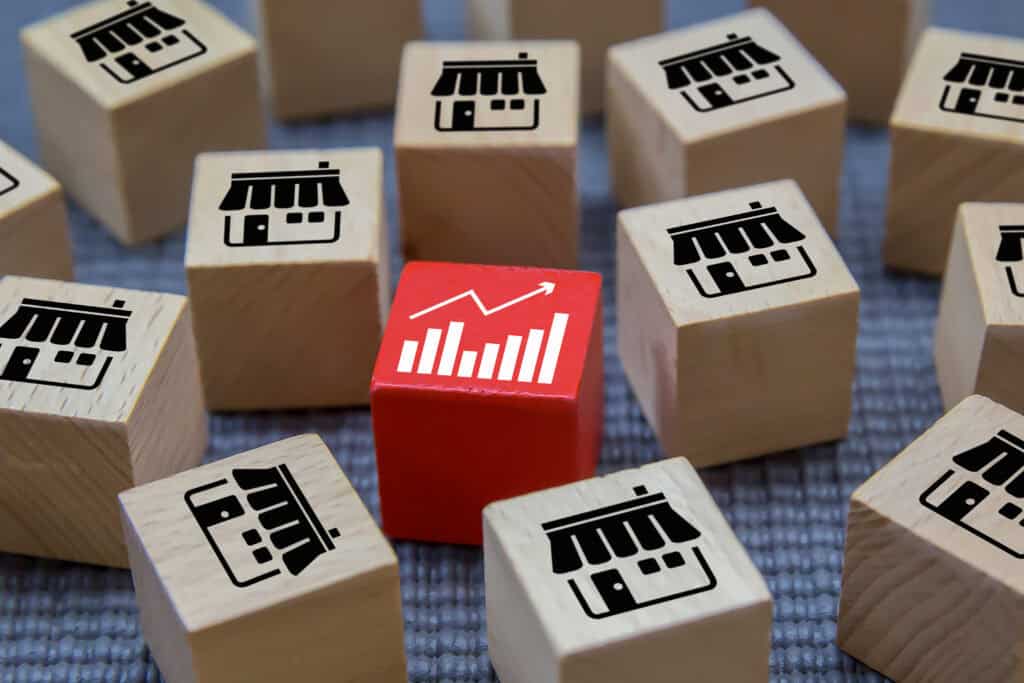
By alphacardprocess October 1, 2025
In the increasingly competitive retail landscape, instinct-driven management of demand and inventory is a thing of the past. Companies are moving closer to data-driven decision making, where every customer touchpoint becomes a chance to gain more valuable insights and make smarter moves. Of these new toolkits, payment analytics is one of the most powerful for analyzing and forecasting consumer behavior.
Each transaction also provides a trove of information, like what customers buy, how often they return to shop and common payment methods, even the best times for them to visit a store. Through patterns like these, retailers can identify trends that go well beyond what’s on the surface to gain a deeper understanding on how they impact demand forecasting and inventory. This linkage of payment data to operational decisions is particularly crucial as companies look to cut waste, minimize stockouts, and match supply with actual consumer demand.
Payment analytics are playing a bigger role in retail for more than just efficiency; they’re also part of delivering a frictionless shopping experience. Having real-time insights on customer needs will allow businesses to maintain key products in stock, cut down on over-ordering and quickly adapt to changing market trends. Let us understand how this helps in predicting demand, optimizing inventory, and improving overall business efficiency.
What is Payment Analytics?

Payment analytics involves aggregating, examining and interpreting payment related data to provide actionable business insights. Unlike the standard financial reporting approach that only examines gross revenue and spending, transaction analytics delves into customer transactions to uncover insights that can be used to manage operations, marketing and inventory.
The scope of payment analytics includes analyzing transaction volume as well as monitoring payment methods used (credit card, debit card, mobile wallet, Buy Now/Pay Later, etc.) and the regularity of purchases. It also pinpoints seasonal trends, such as spikes during holiday sales or dips in off peak months. They will enable companies to join the dots that can help them anticipate consumer demand and act.
It’s important to note the difference between payment analytics and broader business intelligence (BI). While BI covers everything from supply chain data to HR and marketing campaign data, payment analytics hones in on the financial transaction layer itself, providing greater clarity about customer behaviors at the point of sale.
Payment analytics is largely facilitated by contemporary payment processors/POSs. They take real-time transaction data and structure it in ways that are useful, often with dashboards or integrations to analytics tools. Because it’s accessible, retailers can turn raw payment data into actionable insight that can help with demand forecasting and inventory.
Why Payment Analytics Matters for Demand Forecasting?
Payment analytics are particularly useful for demand forecasting, allowing businesses to predict what customers will purchase, when and how much inventory is necessary. By understanding transaction volume trends, retailers can predict their high demand and low demand periods to plan for these spikes during sales promotions or off-peak times.

At the product level, payment analytics can determine which products are consistent movers and which ones move slowly. This enables retailers to maximize their stock levels, making sure they’re not out of popular products and reducing capital bound in low-performing items.
Customer preferences are also clearly reflected. For instance, you may discover that customers most love paying with mobile wallets on weekends, or that repeat shoppers prefer to use credit cards for large payments. Such insights not only guide inventory but also influence promotional strategies.
Another advantage is seasonality detection. Payment information is full of recurring patterns. For instance, businesses may see purchasing art supplies around the holidays or apparel sales during the back-to-school season. Identifying these seasonal trends can help companies balance their purchasing cycles with customer demand.
Finally, geographic differences are a key influence. For a multi-location business, payment analytics can reveal variations in shopping behavior by geography. For example, a product that does well in urban areas may not do well in semi-urban areas. These findings allow retailers to tailor inventory allocation and make sure individual stores have the proper mix of stock.
By combining these elements, payment analytics transforms demand forecasting from guesswork into a precise, data-driven discipline.
Linking Payment Analytics to Inventory Management

Payment analytics has an important role in ensuring that inventory management stays aligned with the customer demand. By connecting data on purchase patterns to stock levels, the retailer can maintain a balance on inventory, eliminating both overstock and understock situations.
For example, by analyzing payment data like sales velocity (how quickly products are selling), retailers can set reorder thresholds at much more appropriate amounts. This prevents excessive stock buildup that ties up capital and storage space, while avoiding shortages that frustrate customers and lead to missed sales.
There’s also a direct link between payments data and supply chain efficiency. Retailers armed with real-time payment insight can better collaborate with suppliers on restocking. This reduces lead times and allows more agile responses to changing demand patterns. For businesses with perishable products, like grocery stores, this is key. Payments analytics can point to upsurges in demand for fresh produce or seasonal goods, allowing stores to modify orders and reduce waste while increasing sales.
Additionally, clothing store chains enjoy an inventory management system that fits well with seasonal fashion cycles. Payment analytics can expose purchase trends for particular styles, colors or sizes and facilitate retailers to adjust production and restocking timings. This leads to increasing inventory turnover, great for moving products off the shelf faster and minimizing mark-downs of old un-sellable stock.
Incorporating payment analytics into supply chain management creates a feedback loop where real time transactional data informs stock choices that lead to increased availability, decreased waste and enhanced profitability. Businesses that connect these systems get an edge with intelligent, pull-based inventory policies.
Tools and Technologies for Payment Analytics
Modern retailers rely on multiple tools and technologies to transform payment data into insights that can be used for demand prediction, inventory planning etc. These tools simplify data collection, analysis and reporting, facilitating more informed business decisions.
- POS Systems with Integrated Reporting are the lifeblood of payment analytics. Today’s POS systems record detailed transaction information such as payment type, how often a purchase is made, time of the sale and exact item that can be used to monitor trends and predict demand. Cloud-based POS systems offer the advantage of remote access, consolidated reporting and scalability for multi-location businesses.
- Cloud-Based Payment Analytics platforms give deeper insights by being able to compare data across systems. They provide flexible reporting, advanced filtering and real-time dashboards. Cloud based platforms allow retailers to see demand trends in real time and against multiple locations or product categories.
- AI and Machine Learning for Predictive Modeling enhance payment analytics by detecting patterns in transaction data that human analysis might miss. Predictive algorithms can forecast demand spikes, identify seasonal shifts, and even suggest optimal reorder quantities, improving inventory efficiency and reducing waste.
- ERP and Inventory Management System based integration enables payment analytics to directly feed into purchasing and stock control. The integration between this asset and your inventory are up-to-date automatically based on forecasts that come out from how much is being received as payments.
- Dashboards and Visualization Tools transform complex datasets in easy-to-understand visual reports. These tools allow decision makers to recognize trends quickly, and take targeted action such as changing stock levels, planning promotional activity, or optimizing prices.
By combining these tools, businesses can transform payment data into a strategic advantage, aligning inventory with real demand to reduce costs and improve customer satisfaction.
Benefits of Using Payment Analytics for Inventory Optimization

Leveraging payment analytics for inventory optimization delivers tangible benefits that improve both operational efficiency and customer satisfaction.
- Cost Savings from Reduced Overstock — Payment analytics can forecast demand which results in lower possibility of ending up with overstock. That also means less overstock, which leads to lower storage costs, less waste, and less captive capital tied up in unsold goods.
- Increased Revenue from Fewer Stockouts — You maintain optimal inventory levels thanks to predictive intelligence. This means that best sales items are available when potential customers want them to avoid missed opportunities and constrained markets.
- Better Customer Satisfaction with Product Availability — he consistent stocking of products builds trust and a loyal customer base. The better retailers are at keeping the supply chain full, the more consumers will return.
- Improved Supplier Negotiations Through Accurate Demand Data — Recognizing past purchasing patterns helps negotiators establish favorable terms with suppliers, purchasing goods in bulk at the right times and receiving high volume discounts.
- Stronger Competitive Edge with Real-Time Responsiveness — In rapidly changing markets, the ability to respond quickly to changes in demand is a key differentiator. Payment analytics enable retailers to change inventory strategies quickly enough to meet changing customer expectations and outstrip the competition.
Challenges and Risks
Payment analytics presents immense potential for inventory optimization, however companies need to overcome a number of challenges and risks in order to fully reap the benefits.
- Data Overload — Current payment systems and POS platforms generate massive levels of data. Without effective filtering, analytics tools, and defined KPIs, companies risk becoming submerged in raw data and never deriving practical insights. This has a tendency to slow down, rather than speed up, decision-making.
- Integration Issues — Integrating payment data with inventory systems isn’t always as simple. Outdated back-end systems, siloed databases and disparate software can lead to delays, errors and extra costs. Streamlining this process is something that will typically require a thoughtful strategy and in some cases, investment into middleware or APIs.
- Data Accuracy — Predictive analytics is only as good as the data it relies on. Inaccurate or incomplete transaction records—due to manual entry errors, system outages, or mismatched datasets—can result in flawed demand forecasts, leading to overstock or stockouts. Maintaining clean, consistent data across payment channels is critical.
- Privacy Concerns — Payment analytics includes confidential insights on transactions and customers. Retailers must consider PCI DSS compliance for payment security, GDPR in Europe and CCPA in California. Misuse of data can result in regulatory fines and brand reputation impairment.
- Staff Expertise — Many retailers don’t have the in-house resources to properly analyze payment data. Without well-qualified personnel, insights could go unnoticed or be misread. For businesses, investing in training or working with analytics companies can fill this divide.
Strategically balancing investments in technology, process improvements and compliance is necessary to succeed to leverage payment analytics.
Conclusion
Payment analytics is revolutionizing the way companies predict demand and monitor inventory. Retailers can use POS systems and payment processors to scrape transaction data and understand customer activity, seasonality and purchasing behaviors. It makes inventory planning more accurate, helps avoid overstock/understock and improves efficiency.
At the end of the day, by utilizing payment analytics for inventory optimization you are not just saving money but creating better customer satisfaction with availability when and where customers desire the product.
FAQs
1. What is payment analytics, and how does it differ from general business intelligence?
Payment analytics is the practice of analyzing transaction and payment data to gain insights about sales, customer preference and trends in how consumers pay. Business intelligence is more inclusive, including various operational and financial data.
2. How can payment analytics improve inventory management?
Purchases patterns, seasonal behavior and methods of payment are monitored by payment analytics to forecast demand and adjust levels of stock accordingly, ultimately lowering the risk of overstock or stockouts.
3. What tools are needed for effective payment analytics?
Modern POS systems with integrated reporting, cloud-based analytics platforms, AI and machine learning tools, and ERP integrations are key components.
4. How do privacy regulations impact payment analytics?
Retailers need to ensure that payment data adheres to PCI DSS, GDPR and CCPA regulations – or face penalties, reputational damage and losing customers’ trust.
5. What are common challenges in implementing payment analytics?
The challenges reported are: data overload, integration issues, ensuring the accuracy of data, maintaining privacy compliance and developing employee competence to interpret data effectively.